Diminished Seventh Chord - From Bach to Jobim
José Rodríguez Alvira
In this article, we will discuss the use of the diminished seventh chord.
1. Chord formation
The diminished seventh chord is formed on the VII degree of the harmonic minor scale:
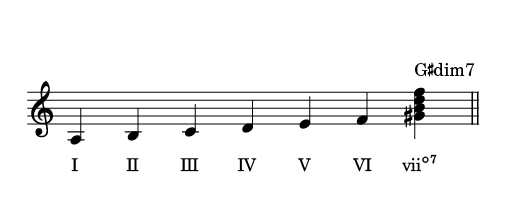
2. Harmonic function
It has a dominant function since it shares notes with the dominant chord with minor ninth.
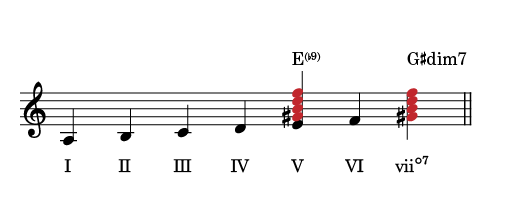
3. Symmetric chord
It is a symmetrical chord since all its notes are three semitones away from the following note. That is why it can adopt different personalities. Below are the possible reinterpretations of the VII degree of A minor:
- G# diminished seventh chord, VII degree of A minor.
- We enharmonically transform the G sharp into A flat to obtain the VII degree of C minor.
- We enharmonically transform the G sharp into A flat and the B into C flat to obtain the VII degree of E flat minor.
- We enharmonically transform the F into E sharp to obtain the VII degree of F# minor.

So a single chord can be the VII degree of four minor keys.
4. Chord usage
1. Dominant function
As we have seen previously, the chord with dominant function resolves to the tonic of a minor key:
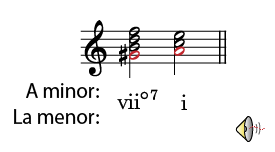
2. Common note
One of the notes of the diminished seventh chord is the root note of the chord with which it links:
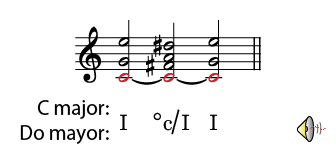
3. Passing chord
One of the notes of the chord resolves to a descending semitone. In this example, the second chord - D# diminished seventh - resolves to D minor seventh (one semitone lower):
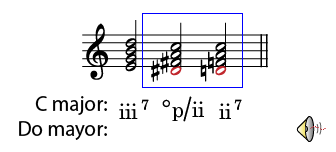
Very effective for passing from one minor seventh chord to another (in this case, from E to D).
5. Musical examples
Dominant function
Diminished VII degree that resolves to tonic.
In the Prelude in C major, Bach shows us the use of the chord as:
- Secondary diminished seventh auxiliary of the second degree (measures 12 to 13).
- VII degree of a major key (14 to 15).
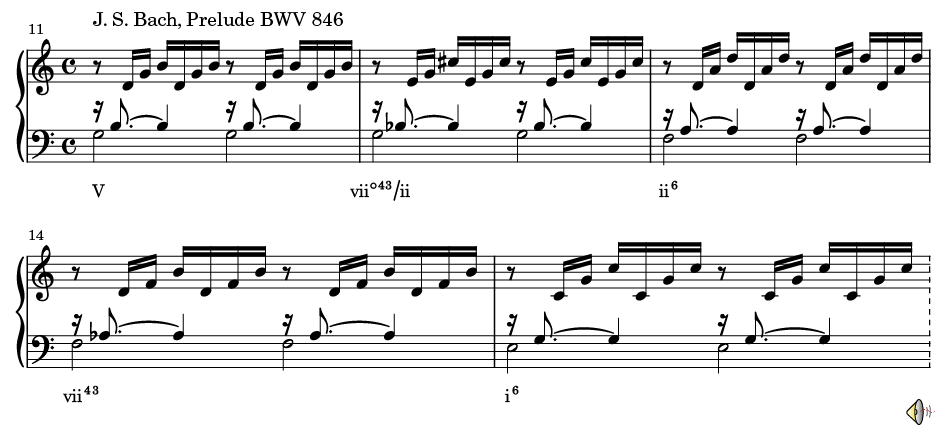
More interesting is his use in the Chromatic Fantasy. In the following example, we see:
- A pedal tone of D (primary key of the work) in the lowest voice.
- A melodic line on the upper voice.
- A series of diminished seventh chords (in red in the example) descending chromatically between the pedal and the melodic line. This series of diminished sevenths is interrupted briefly on the last beat of the second measure (D minor chord) and on the last beat of the next-to-last measure (G minor):
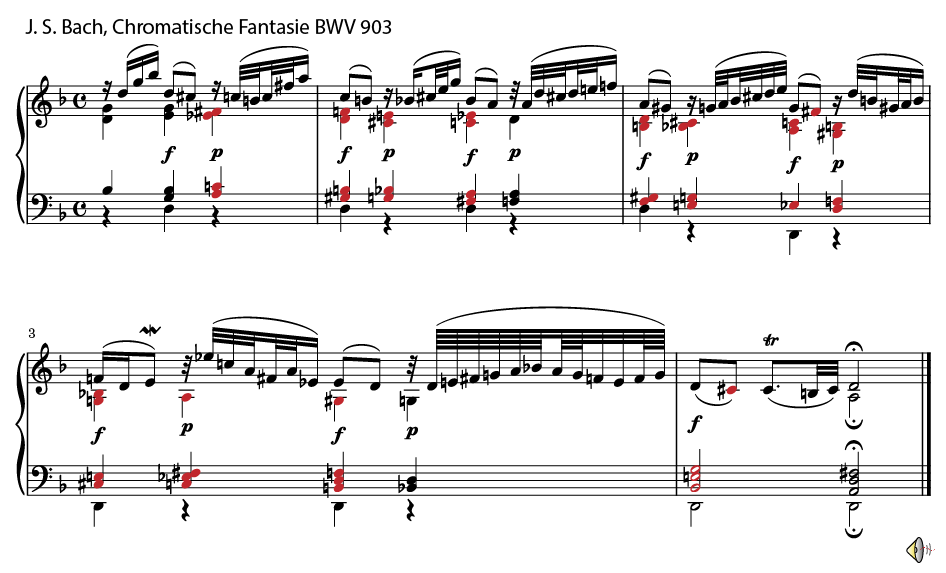
How do we explain these diminished seventh chords? Let's start from this series of fifths that includes dominant sevenths of the twelve keys:

Let's replace each dominant chord with the corresponding diminished seventh chord (G major's VII degree, F# diminished replaces G major's V degree):

If we arrange the movement of the voices so that each voice moves to the nearest note (the F# of the first chord would move to F natural), we will obtain the chords used by Bach:

The harmonic progression used by Bach is a cycle of fifths that takes us through the twelve keys.
Using a common note
One of the notes of the diminished seventh chord is the fundamental of the chord with which it links.
In the following example, Schubert links an A-flat major chord with a B diminished seventh chord. The common note is the A flat:
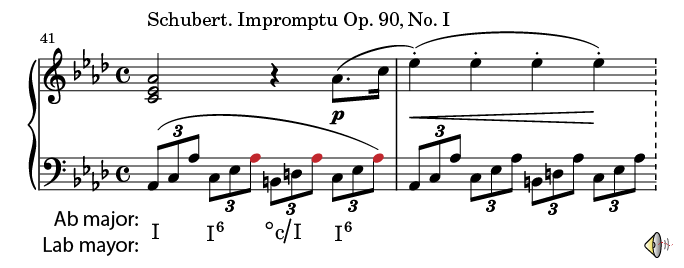
Here a dominant F chord goes to a B diminished seventh chord. The common note is the F:
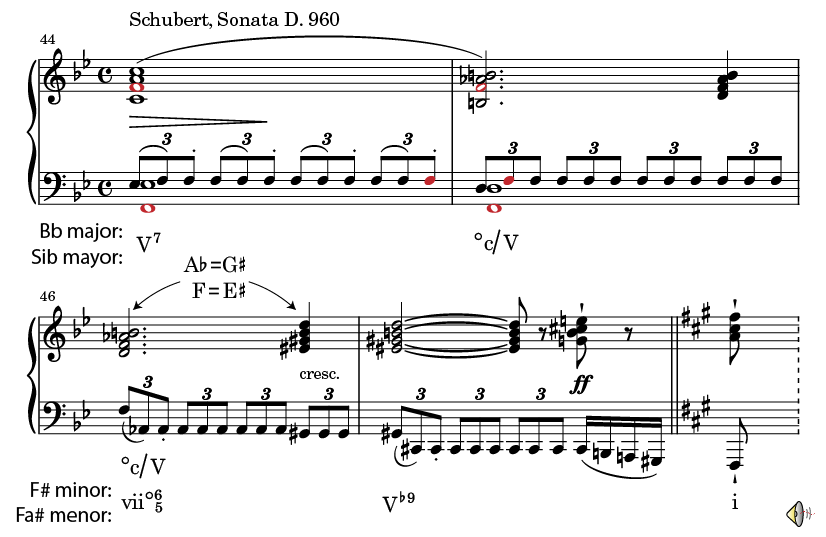
In measure 46 of the above passage, Schubert transforms the B diminished seventh (B-D-F-Ab) into the vii degree of F# minor (E#-G#-B-D) to modulate from B-flat major to F# minor.
Passing chord
One of the chord's notes resolves by descending semitone.
In this passage, Bach resolves a C# chord diminished to A minor. If we add the missing seventh (B-flat), we see that it is a B-flat descending by a semitone to A. The progression is repeated using a B diminished and a G minor chord:
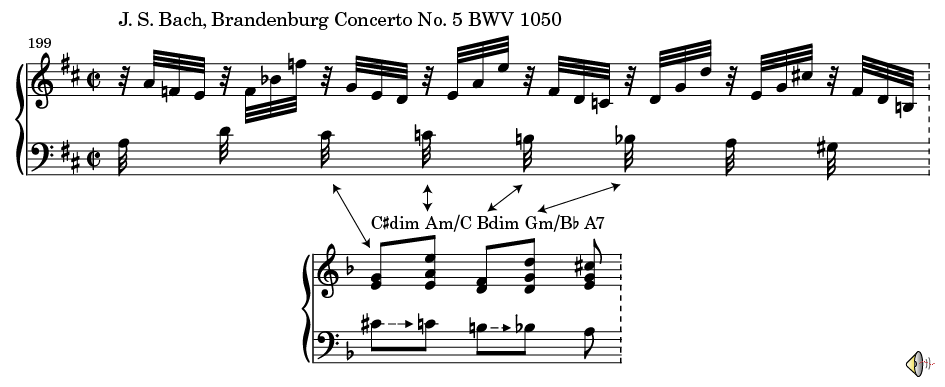
Note: You can see another example in the Chromatic Fantasy passage discussed in the previous topic on the minor chords interrupting the chromatic series of diminished sevenths.
Chopin uses practically the same chords in his Prelude in E minor but adds the minor seventh to the A chord:
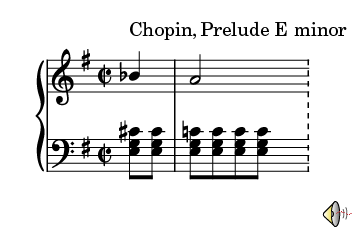
Finally an example of Jobim using the same chords:


This work is licensed under a Creative Commons Attribution-NonCommercial-NoDerivatives 4.0 International License. José Rodríguez Alvira.
Published by teoria.com